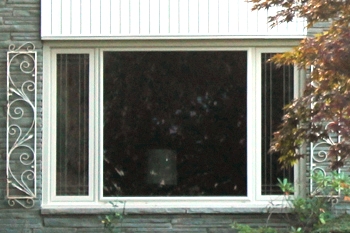The Big Brick Review
Building on the narrative of our lives...one brick at a time.

365 Pelham Road
by Sejal Shah
RANCH HOUSES, WHEN I was growing up, were not cool. At least in my mind, at least on that street, in the 1980s. Ranches seem appreciated now—or maybe it’s just everyone’s eventual knee problems. My neighborhood displays an odd mix of housing styles within its streets. The developers ran out of money, I read, during the Depression. By the time people were building again, well after WWII, styles had changed. Thus, ranch houses live next to Tudors, split-levels next to Colonials.
My life is a ranch house—laid out squarely—not coyly, in levels like the Colonial homes on the street. No dormer windows or dreamy second story verandas or slight, whimsical balconies in my house. No attic bedroom or interesting third story. I am straightforward, to a fault, often without decoration.
Sometimes I think I am uncomplicated, but I know it’s not true. Ranch houses have their hidden spaces and places, too, even if they are not as old, not as interesting, not as layered as the fake Tudors and the Capes; they suggest a vision of family I could never quite get behind. Ranches present a large formal living room with picture windows and wide, open spaces. Pictures of a happy family. I never wanted anyone to be able to see into my home—houses are for privacy, places to read and restore.
The only other house my parents owned before that was also a ranch house. (They are, at any rate, consistent.)
At least we had an interesting added-on room—the blue room—a mother-in-law attachment. I am the addition, the mother-in-law attachment. I am not a mother-in-law; I am a returned child, boomeranging back every five or ten years. I think about the woman for whom it was built: this room with its own bathroom and a walk-in closet and a cedar closet and four bright windows across three sides of the room. I must think about her weekly since I moved back here, and how kind (or necessary) it was for the Lemperts, the people who built the home, to do that for the parent who moved in with them. Everyone needs a little space.
One of the original owners asked to see the house once, years after they had moved, and my mother said no. It upset me when I heard this; I would want to be allowed back in if / when we move from the house, leave this house, lose this home.
Did he or she just ring the doorbell one day? I imagine it that way.
When I ask her about it again, my mother does not remember the previous owners stopping by at all. This I know: this house meant something once, to people other than us.
We talk about the house a lot, still. We live here, still, my parents and me, now joined by my grandmother. My parents were grateful for it—the location, the large finished basement that doubled as a meeting place for their community. Pujas, bhajans, Hindu festivals, lectures, poetry readings, visiting swamis. On those nights, their friends’ cars lined the street and their shoes filled the garage. We kids played hide and seek or tag outside, or swam. In those days, we had a pool.
I often wished my house sat closer to Highland, which bisects Pelham Road, or that we lived on Upper Pelham, which is what I called the other, older, stately, more elegant half of the street. A ranch would have been out of place on that side. And I wonder about that now—my almost-obsession with the houses on the street—they almost seem like old friends or parents of friends—I have known their faces for so long, over so many years. Thirty-five years of driving by the same houses, walking by the same houses, years of disembarking off a yellow school bus and trudging home on uneven cement sidewalks. It’s an old enough neighborhood that the sidewalks buckle and grass grows between squares, sometimes.
I orient myself from that house. Number 365: the number of days in a year, we would tell our friends—that’s how to tell our house apart from the other tan ranch houses at the end of the street. Even though the bedrooms, like everything in a ranch, are on the first floor, I always felt safe. Both the bedroom in which I grew up and the bedroom in which I now live, the mother-in-law attachment, face to the backyard. And I value that—the solidity and privacy of the house. A fort, for keeping the world outside at bay. I knew if a job ended, I could always come back. There was a place for me. I called it my house, still, though I hadn’t lived there in years, had in fact lived in other states. Maybe I always knew I would be back. I think I did. I think I always knew.
Sejal Shah’s essays and stories have recently appeared in journals including Brevity, Conjunctions (Web), The Kenyon Review Online, and The Literary Review. Her 2013 essay, “Thank You,” was nominated for Best American Essays and the Pushcart Prize anthology. She lives and teaches in Rochester, New York; visit her online at www.sejal-shah.com.
"365 Pelham Road" photo © 2014 Gregory Gerard
Tweet < back to the Review.
